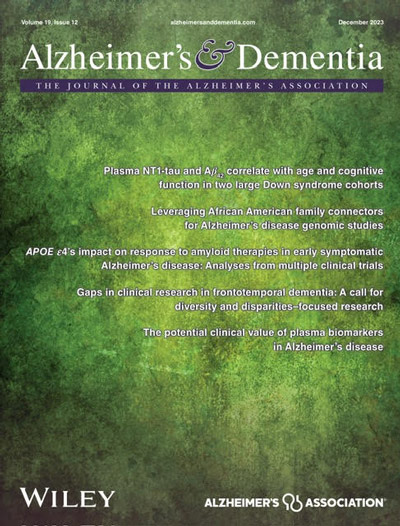Plasma p-tau217 and Aβ42/40 as markers of Aβ pathology in the Lewy body continuum
Abstract
INTRODUCTION
This study evaluated whether plasma phosphorylated tau-217 (p-tau217), amyloid beta (Aβ)42/40, and their combination could serve as biomarkers of Aβ co-pathology across the Lewy body continuum, where Aβ is frequently observed from prodromal to symptomatic stages.
METHODS
Individuals with dementia with Lewy bodies (DLB), Parkinson's disease (PD), and their shared prodromal stage, isolated rapid eye movement (REM) sleep behavior disorder (iRBD) underwent plasma sampling, Aβ-PET, and cognitive testing.
RESULTS
Higher plasma p-tau217, lower Aβ42/40, and their interaction were associated with greater Aβ-PET uptake. Individuals with higher-than-median p-tau217 and lower-than-median Aβ42/40 showed the highest Aβ burden. Both biomarkers predicted Aβ-PET positivity, but only p-tau217 correlated with cognition. Among 44 iRBD participants followed prospectively, elevated baseline p-tau217 predicted phenoconversion to overt Lewy body disease.
DISCUSSION
Plasma p-tau217 and Aβ42/40 may serve as accessible biomarkers of cerebral Aβ pathology and help identify individuals across the Lewy body continuum who could benefit from Aβ-targeted therapy.
Highlights
- Plasma phosphorylated tau-217 (p-tau217) and amyloid beta (Aβ)42/40 predict cerebral Aβ burden in the Lewy body continuum.
- Both biomarkers individually show high accuracy for identifying Aβ positron emission tomography positivity.
- Plasma p-tau217, but not Aβ42/40, is associated with cognitive performance.
- Elevated plasma p-tau217 predicts future phenoconversion in isolated rapid eye movement sleep behavior disorder.


 求助内容:
求助内容: 应助结果提醒方式:
应助结果提醒方式:


